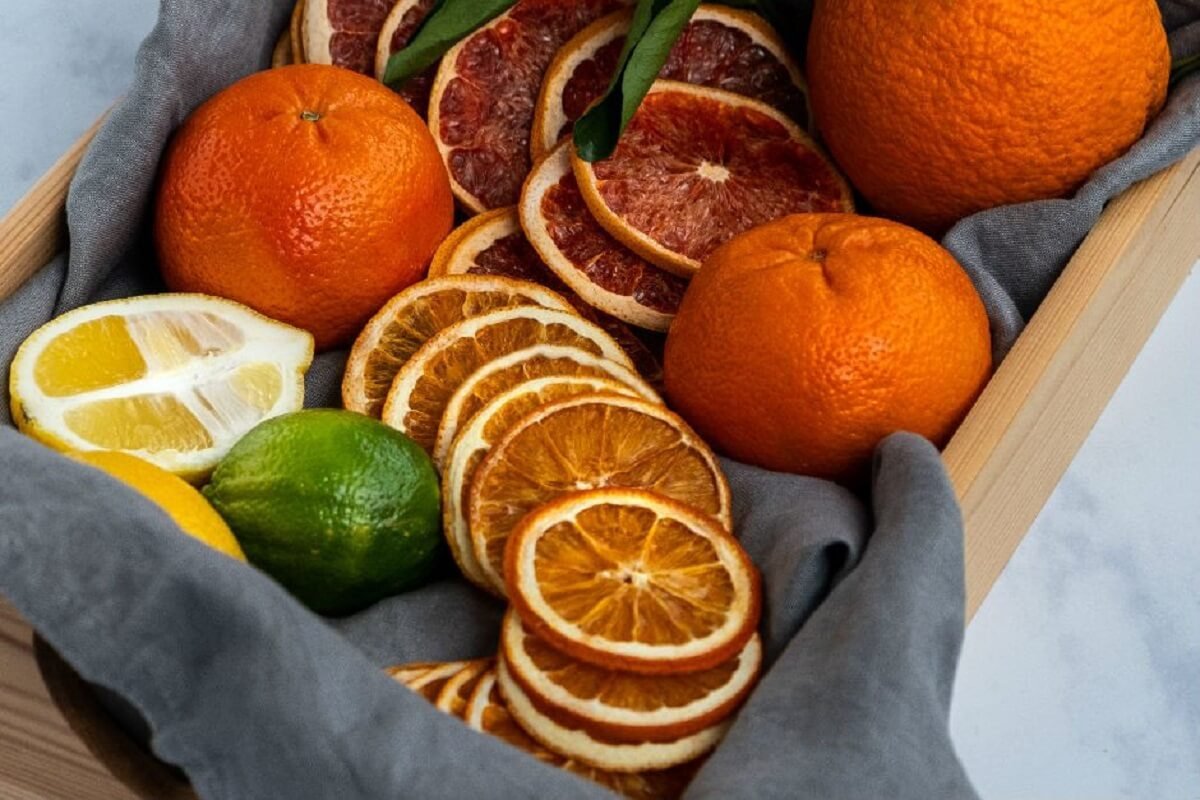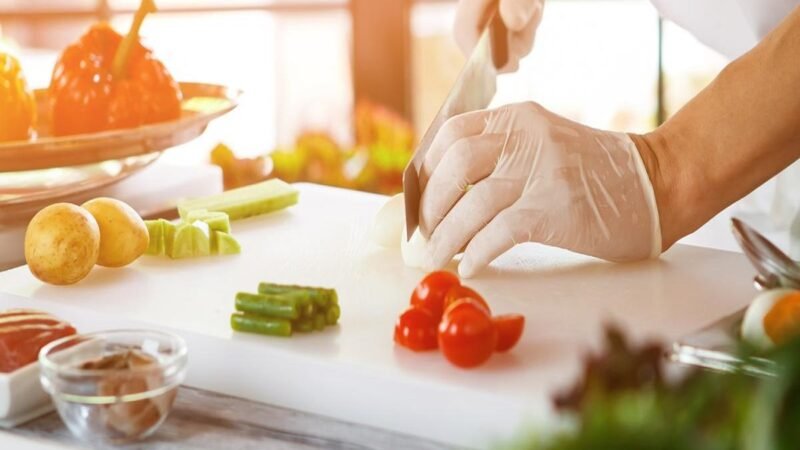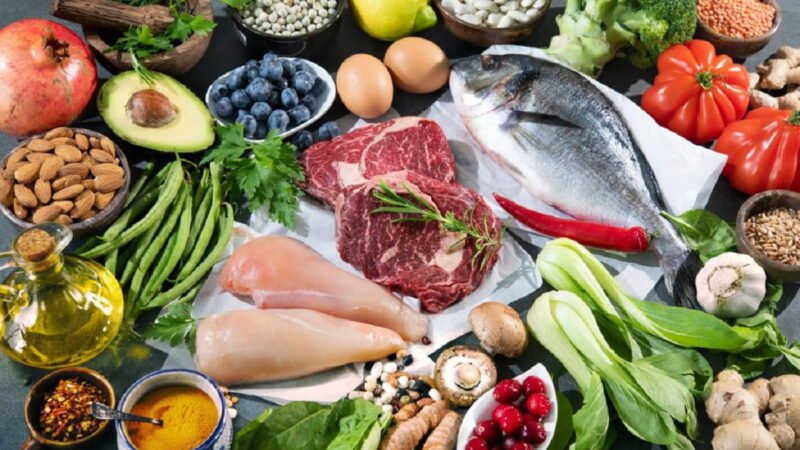How Would Early Americans Dry Food?

The amazing thing about food preservation is that it has been used in almost every culture at almost every time. To stay alive, people in the past had to control nature. I also place it where it was cold, he put seal meat on the ice to freeze. In tropical places, he used the sun to dry food. In this article, you can learn about How would early Americans dry food?
By its very nature, food starts to go bad as soon as it is picked. Ancient people were able to settle down in one place and form communities because they could keep food for a long time. He no longer had to eat everything he killed or grew right away. He could save some of it for later. Each culture used the same basic methods to keep its local food sources from going bad.
Table of Contents
How do Americans Dry Food?
Food was one of the most important parts of life in the early United States. Without it, a lot of people would have died of hunger or sickness. Early Americans used many different ways to keep food from going bad. Some people used the sun or the wind to dry their food. Some people dried food in storage pits, ovens, or even overfires.
10 Ways to Preserve Food like the Americans
Drying
The easiest way to store fruit, vegetables, and herbs was to dry them. Apples, peaches, pumpkins, beans, and berries were all easy to find, and this method was often used to keep them fresh.
Fruit and vegetables were dried by putting them on a clean surface in the sun and covering them with a finely woven cloth to keep bugs away. By letting the sun dry out these things, we made them less likely to grow mold and helped them last through the winter.
Several cookbooks also say that you can dry fruit in an oven that is “slack,” or cool. When the food was done baking, the cook would put the fruit on pans in the oven as it cooled down. The fruit would stay in the oven overnight to dry.
Freezing
In the right climates, freezing was an obvious way to keep things from going bad. Any place where it got below freezing at least part of the year used the cold to keep food from going bad. To store things for longer, temperatures below freezing were used. For this, people made good use of cellars, caves, and cool streams.
In America, icehouses were built on estates to store food and ice. The “icehouse” was soon called an “icebox.” Mechanical refrigeration was made and used quickly in the 1800s. Clarence Birdseye also found out in the late 1800s that quickly freezing foods at very low temperatures made them taste better. After some time, he perfected his “quick freeze” method, which changed the way food was stored.
Pickling
Pickling was another way to keep food from going bad. Vegetables and even eggs were put in glazed crocks, soaked in vinegar, and covered with leather, clarified butter, or a pig bladder, which could stretch and act like plastic wrap. The vinegar made the air very acidic, which stopped the vegetables from going bad.
For example, sauerkraut was a very popular type of pickle that had been left to ferment. By putting cabbage in vinegar, the cabbage would ferment and release vitamin C, which is known to cure scurvy.
In the 1800s, pickling was used to preserve almost every vegetable you could think of. Marigold flowers were even pickled and used to decorate porridge.
Fermenting
Fermentation was not made up but was instead found. There is no doubt that the first beer was made when some barley grains were left out in the rain. Microorganisms that took advantage of the situation turned the sugars from the starch into alcohol.
This is also true of fruits that are turned into wine, cabbage that is turned into Kimchi or sauerkraut, and so on. Ancient people were smart to be able to notice, control, and encourage these fermentations. Some anthropologists think that people stopped being nomads and became farmers around 10,000 BC. Farmers grew barley to make beer. The alcohol was delicious and the beer was good for you. People thought it was a present from the gods.
Fermentation was a good way to keep food fresh. It could not only keep food from going bad, but it could also make food more nutritious and make less desirable ingredients taste better. As fermentation happens, vitamins can be made by the microorganisms that are involved. This turns the ingredients into a more healthy end product.
Sugaring
A method called “sugaring” was often used to keep fruits fresh. Putting different kinds of fruit in thick syrup would make them last for months. If mold grew on the top layer of syrup, it was scraped off and the fruit was scooped out. Even though this method has been around since the 14th century, it wasn’t until the 18th century that it became cheaper and easier for the average colonial household to use.
Curing
The first way to cure something was to dry it out. Salt was used by early cultures to help foods dry out. Salting was common, and raw salts from different sources were used in cooking (rock salt, sea salt, spiced salt, etc.).
In the 1800s, it was found that some sources of salt turned grey meat into a more appealing red color. Red meat was the most popular with customers. There were nitrites in this mix of salts (saltpeter). As more was learned about Clostridium botulinum’s microbiology in the 1920s, it became clear that nitrites stopped this organism from growing.
Meat & Dairy
Most colonial diets were high in protein, so meat that was smoked in the fall was eaten in the winter. Colonists could also eat fresh meat, which they could keep cold by hanging in their unheated attics or putting it on ice for a short time.
Salting was another way that meat was kept for a long time. The meat was covered in salt and put in wooden barrels, which were then filled with water to make a brine. The brine kept the meat from drying out and made it taste better. It also stopped bad bacteria from growing.
Milk was often kept longer by making butter. The cream that rose to the top of the fresh milk was churned, which caused the buttermilk to separate from the fat globules. The buttermilk would be taken out of the mixture by kneading and washing it. Even poor families with only one cow would churn butter to save milk, and many homes would have churns, milk pans, and butter paddles.
Jam and Jelly
Early cultures knew that honey or sugar could be used to keep things fresh. Fruits were often stored in honey. In ancient Greece, quince was mixed with honey, left to dry a bit, and then packed into jars very tightly. The Romans made the method better by cooking the quince and honey until they formed a solid.
Sugar cane came to Europe because of the same desire to trade with India and the Orient which brought pickled foods to Europe. Housewives in the north, where there isn’t enough sun to dry fruits, learned to make preserves by heating the fruit with sugar.
Cold Storage
Even though ice boxes and ice houses weren’t used much during the colonial period, they became popular in the early 1800s as a way to store food temporarily. Food could be kept in an ice house for longer periods of time, but it wouldn’t last as long as pickled or dried food.
At Washington Crossing Historic Park, you can see what a big ice house looks like. “If you go to the park, you might see an eight-sided building on the side of McConkey’s Ferry Inn. “This is our ice house. It was added to the tavern around 1820,” says Connie Unangst, a historical interpreter. “Ice was mostly used in the short term to keep food from going bad, like oysters, before they were served in a tavern.”
The McConkey’s Ferry Inn’s ice house is too big to just be used by the bar. It’s also likely that Mahlon Taylor’s wholesale business used it to store food for a short time.
Canning
When foods are canned, they are put in jars or cans and heated to a temperature that kills microorganisms and stops enzymes from working. When this is heated and then cooled, it makes a vacuum seal. The vacuum seal keeps the food inside the jar or can from getting contaminated again by other microorganisms.
Canning is the newest way to keep food from going bad. It was invented in the 1790s by Nicolas Appert, a French confectioner, who found that heating food in sealed glass bottles kept it from going bad. “If it works for wine, why not food?” he thought. Around 1806, the French Navy tried out Appert’s ideas on a wide range of foods, including meat, vegetables, fruit, and even milk, with good results. In 1810, an Englishman named Peter Durand used tin cans because of how Appert did things.
Appert had found a new way to keep food fresh that worked well, but he didn’t fully understand how it worked. People thought that the lack of air was what made the preservations happen. It wasn’t clear until 1864 when Louis Pasteur found a link between microorganisms and food going bad or making people sick. Raymond Chevalier-Appert patented the pressure retort (canner) in 1851 so that food could be canned at temperatures higher than 212oF, just before Pasteur made his discovery. But it wasn’t until the 1920s that anyone realized what this method meant in terms of Clostridium botulinum.
The Pros and Cons of Drying Food
Putting away food was an important part of life in the early United States. Families would dry food to keep it for a long time or to eat when there wasn’t enough to eat. Below, we talk about the pros and cons of drying food.
The Pros of Drying Food:
1. Food stays good for a long time when it is dried.
2. In times of famine, it can be eaten instead of a meal.
3. You can do it easily at home.
4. It costs little to do.
5. It is good for the earth to do.
6. It doesn’t take much work to do.
7. Many different kinds of food, like fruits, vegetables, and meat, can be dried.
8. It gives you more options for storing food because you can dry anything you have on hand.
9. Some people think that dried food tastes better than fresh food because it is more concentrated and hasn’t been damaged by the sun or air conditioning while it was being stored.
10. There are many ways to dry food, so you can find the one that works best for your family.
How to Dry Food?
The best way to keep food for later use is to dry it. It’s also a great way to make your food taste and feel better. Food can be dried in a lot of different ways, and each way has its own pros and cons. The direct method, the sun method, the wind method, and the water vapor method are all ways to dry food.
The most simple and basic way to dry food is the direct method. You just put the food in something dry, like an oven or a dehydrator. This method works well for small amounts of food because drying it completely can take a long time.
Another easy way to dry food is to use the sun. If you put the food on a hot sunbeam, it will slowly lose its moisture. This method is good for drying out large amounts of food because it doesn’t take very long.
Another easy way to dry food is to wind it up. You put the food in a place with a lot of wind, and the wind slowly dries out the food. This method is good for drying out large amounts of food because it doesn’t take very long.
The most cutting-edge way to dry food is with water vapor. You use water vapor to move moisture away from the food, which dehydrates the food in the long run. This method works well for small amounts of food because it takes a long time to completely dry out the food.
Conclusion
Some historians think that people preserved food not only to eat but also to show off their culture. They name a lot of preserved foods that are eaten on special occasions and have religious or festive meanings. More and more people in the United States live in cities and buy food from stores.
They are no longer living in the country and taking care of themselves. Still, many people still enjoy being in a garden. And every year there is a large harvest of vegetables and fruits. It is because of this cultural aspect that preserved foods are still around today. We used to save things because we had to, but now we save things because we want to.
Frequently Asked Questions (FAQ) about How Would Early Americans Dry Food?
How did people dry food in the past?
All kinds of foods were kept for a long time by drying them. Before being stored in a dry place, grains like rye and wheat were dried in the sun or air. Fruits were dried in the sun in warmer places and in the oven in cooler places.
How did Native Americans dehydrate food?
The ancient people of the Eastern Woodlands dried their food in two main ways: with heat from the sun and with heat from the fire (which included the benefit of smoke). Both could be used together, or one could be used more than the other depending on the food.
How did early Americans preserve food?
Most of the time, meats were salted, smoked, or put in pots. Eggs, vegetables, and fruits were pickled, dried, or put in the cold (basement/root cellar) storage. Straw was known to be a good insulator, so it was often used to keep delicate foods from getting too hot or too cold.
How did ancient people dry fruit?
As early as 12,000 B.C., people in the Middle East and other parts of Asia dried food out in the hot sun. In places where there wasn’t enough wind or sunlight, people built “still houses” and heated them with fire to dry fruits, vegetables, and herbs.
How did pioneers keep meat from spoiling?
“Strong enough to float an egg” was how people used to describe brine. With this method, homesteaders could keep meats for weeks or even months. But, just like salt pork, which was another important part of the pioneer diet, “salted down” meat had to be rinsed, scrubbed, and soaked before it could be eaten.
How did they dry meat in the old days?
Meat or fish was dry-salted by being buried in salt, and brine-cured by being soaked in salt water. For dry-salting meat, pieces of meat were pressed with dry salt, and then they were stacked in a container (like a keg) with dry salt all around each piece.
Read more:
What’s That Smell Food Fitness Family?





